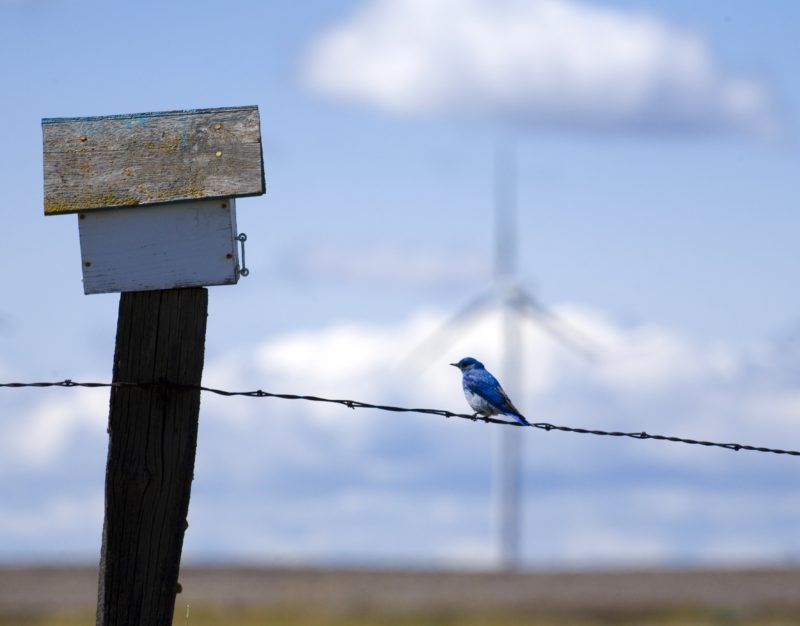
Big Horn Wind Farm, Credit: Iberdrola Renewables, NREL
By Ryan Butryn, REWI Senior Information Science Manager, and Julia Worcester, REWI Communications Manager
PLOS ONE recently published an article (“Seasonal patterns of bird and bat collision fatalities at wind turbines”) that utilized data compiled in the American Wind Wildlife Information Center (AWWIC). Collaborative data-sharing efforts such as AWWIC can play a key role in improving the conservation of species adversely affected by renewable energy development by supporting research targeted at finding solutions.
As John Lloyd, lead author of the PLOS ONE article, noted: “First and foremost, this study helps us understand why certain species of birds and bats seem more likely to collide with wind turbines than do others. But it also highlights the power of collaborative research – our analysis, and the patterns that it uncovered, was only possible because we could draw on data from hundreds of different studies conducted across the United States and compiled in AWWIC.”
The study indicates that species and ecoregions have significantly different timing patterns and that there is not a “one-size-fits-all” approach to curtailment (reducing turbine operations to avoid wildlife collisions). Curtailment is effective at reducing collisions, but it results in reduced electricity production, so the study helps clarify the pattern in collision timing and refining curtailment prescriptions to match the time of greatest collision risk.
The research confirmed many of the previously observed patterns in collision timing using a larger dataset. It also offers a repeatable analytical technique that takes variable search effort, species, and regions into account. An unexpected finding for bats was that the fall peak in collision timing exists for species that have different life histories – cave-hibernating and migratory bat species share a similar peak in seasonal timing. The existing knowledge about bird collisions indicated that birds have a spring and a fall peak in collision timing; by looking at guilds of bird species, we show that species that spend more time in the habitat typically found around turbines (grassland) do not have the seasonal peak in collision like woodland birds that are just passing by turbines on their way to other habitats.
The authors will be updating collision timing models as more data become available. We don’t expect the broad patterns to change with more data, but we can reduce the uncertainty of the length and magnitude of seasonal peaks in collision frequency in most ecoregions with additional data. Expanding the investigation to include fatality rates is a high priority for conservation strategies and is the focus of our ongoing research efforts using this dataset.